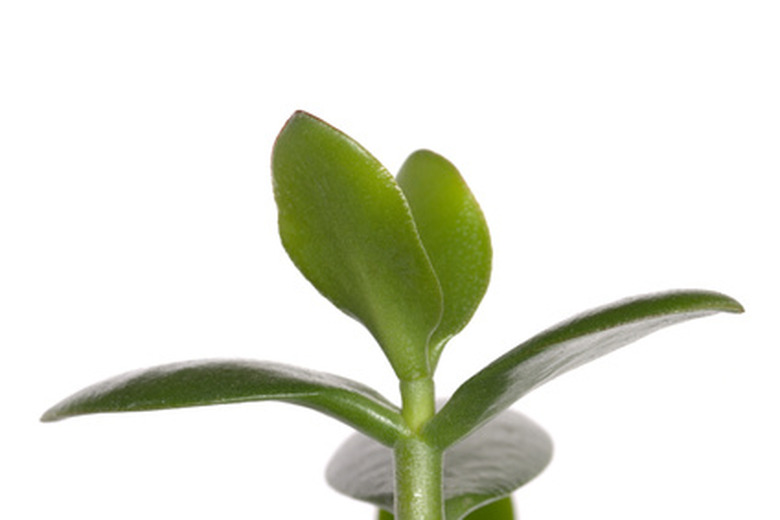The Meaning Of A Jade Plant
Jade plants have long been symbols of prosperity in Asian cultures, says Hawaiian horticulturalist Michael Miyashiro. They are an integral part of modern feng shui designs.
Jade plants make a perfect housewarming gift or for a new business or marriage. The easy-to-grow jade comes in a variety of cultivars, including those with strikingly variegated or two-toned leaves, principally in their namesake jade green color, but also in creams, pinks and yellow.
History
Crassula ovata is a succulent, a plant that stores water in its leaves while its stems get woody with age. It may produce tiny pink or white flowers. A member of the orpine family, jade is found world-wide. They grow principally in dry and cold areas of the Northern Hemisphere and southern Africa. Most are green, but there are variegated varieties, meaning they have multi-colored patterns on their leaves.
- Jade plants have long been symbols of prosperity in Asian cultures, says Hawaiian horticulturalist Michael Miyashiro.
- Most are green, but there are variegated varieties, meaning they have multi-colored patterns on their leaves.
Horticulture
Crassulas are considered the true jade while portulacaria afra are called Ming jades. There are as many as 1,400 species, some of them so rare they fetch $1,000 a plant and others guarded as family heirlooms and never sold on the open market. (ref 1) Grown in bright, unobstructed sunlight with appropriate watering in cool night temperatures in the low to mid-60s, jades will produce white star flowers with pink blushes.
Prosperity (Money Plant)
The ancient Chinese associated jade with the wealth of emeralds. The round leaves of jade plants resemble coins, giving rise to the name Money Plant. When plants are placed in the southeast corner of the home, the owner's fortunes are believed to increase with each new leaf.
During the Chinese New Year celebrations, jade plants are set on top of stock and investment certificates so they will increase in value during the coming year. Jade plants are decorated by hanging "lai see" envelopes containing money, Chinese coins and red ribbons from their branches for good luck and prosperity in the coming year.
- Crassulas are considered the true jade while portulacaria afra are called Ming jades.
- When plants are placed in the southeast corner of the home, the owner's fortunes are believed to increase with each new leaf.
Good Luck
Jade plants are primarily green, the color of growth, renewal and spring. Jades bring good luck in the form of wealth, and having them in the home is said to boost mental acuity with the increase in oxygen they release into the home.
Leaves that are knocked off a parent plant are lucky if they land on soil because they can grow on their own. They can also be propagated by allowing a stem cutting to dry for a few days and then planting it in soil.
Friendship Tree
Jades are a perfect present for a friend. If a jade flowers, it is the result of great care given to the plant. Flowering jades reflect well on the owner and symbolize great friendship, luck and prosperity. The green leaves signify energy and the joy of friendship, and the flowers represent the fragrance of great friendship.
- Jade plants are primarily green, the color of growth, renewal and spring.
- Jades bring good luck in the form of wealth, and having them in the home is said to boost mental acuity with the increase in oxygen they release into the home.
